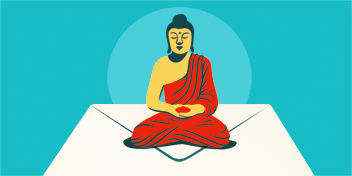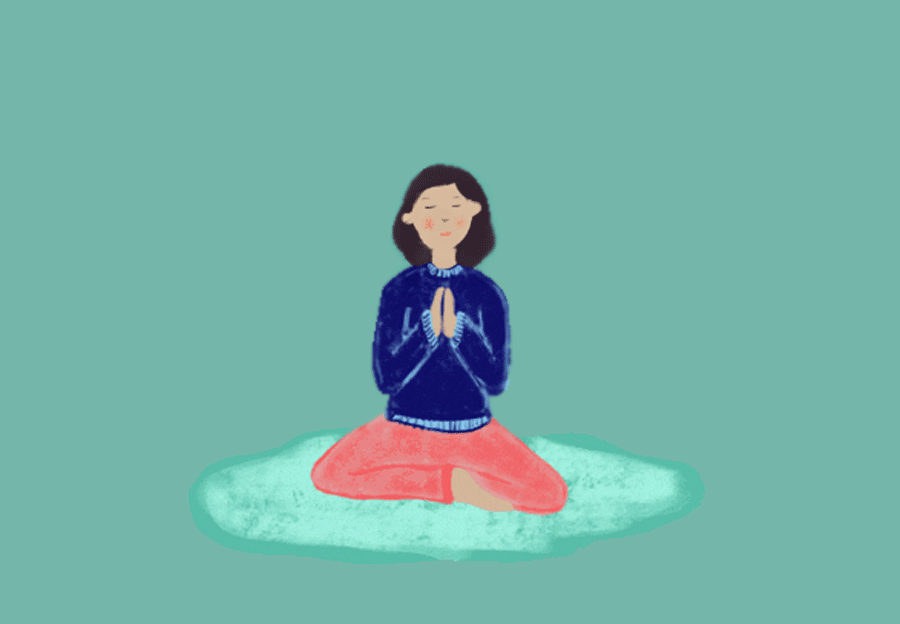The last thing I expected to think about during this pandemic was my posture—the placement, during meditation, of my hands, the erectness of my back, the location of my feet. But that is where I am today with my practice: absorbed with posture.
Of course, posture is not where I started. When the pandemic hit, I pulled closer to sangha, grateful for the online connection. I read more Tricycle articles. I joined an online guided meditation on lovingkindness. I used an app to listen to a Joseph Goldstein book on mindfulness. When a Buddhist teacher said, let your heart break, I did just that. I cried (finally) and practiced compassion.
Then, this past week, a member of Nashville’s people of color sangha gave an online dharma talk and mentioned posture. I remembered with a jolt my experience of posture a decade ago, when everything that mattered to me vanished. It began with the unexpected death of an auntie who had been like a mother to me. A few weeks later, my father had a severe stroke that almost killed him and hospitalized him for more than a month. Shortly after, in one phone call I lost my job and in another conversation my beloved told me that he wasn’t sure he would ever want to marry anyone. All this happened over weeks, but it felt like days.
And that’s when the skinny Buddhist nun showed up. Or to be more accurate, I showed up in South Florida where a Colombian nun had started a Zen sangha in Hialeah, a city on the outskirts of Miami that is home to Cuban exiles of all ages (like my father) and also a few non-Cubans (like my Colombian mother). It was, I said at the time, the most unlikely place to find a Buddhist community of any kind—but there it was.
I had always said I would never join a Zen anything. The chants, the rituals, the hierarchy—it all reminded me of Catholicism. But after all certainty in my life vanished and I didn’t know what to do next, I found that I didn’t care about lineages or traditions. I just needed a place to sit and people who also wanted to sit.
The nun cared about my posture. Overall about my posture she said: not bad. But in that living room in South Florida with the large cold tiles—a room she had cleared and converted into a space for meditation cushions, a tall altar and incense—she tugged my shoulders down. She traced the back of my spine. She taught me to imagine a string reaching from the crown of my head to the ceiling. She told me that the position of my hands—in my lap, one hand within the other, the thumbs making the slightest contact—indicated where my mind was at the moment. Lazy hand position meant a wandering mind.
I had never thought of my chin before, but she spoke of it as if it were a new body part. The chin was a napkin. It had to be carefully tucked in which required the head to be upright—again, the crown of my head to the ceiling of the living room in Hialeah. The chin, like the hands, could also betray my mind. If I was lost in thought, the chin might suddenly lift up. If I was falling asleep, it might collapse.
On the most glorious days in that sangha in Hialeah, I noticed that paying attention to posture not only brought me to the here and now, but it also anchored me when everything else was falling apart. On the worst days, when the grief was too much and I didn’t give a damn about my chin, I sat there and quietly cursed at the nun. But when the sitting period was over, I found, of course, that the emotional opera inside of me had shifted. I was thinking about breakfast. She served little plates of broccoli and cheese with black tea.
Now, almost ten years later, during this time of pandemic, I am finding that it’s not the practice of lovingkindness or tonglen that is helping me to navigate the days. It is the focus on posture, the familiarity of here, sit here, notice your sit bones, drop the shoulders, crown to ceiling, straight back, open heart, the chin—where is your chin? For a few seconds, while focused on my posture, the world turns tangible again, becomes something I can hold in my hands. It is not all sickness and ventilators and death numbers spiraling upwards. For a few seconds, the world is here in my spine, in my lap, in my bony chin.
♦
Read more free reflections on Buddhist practice in a pandemic here.
Thank you for subscribing to Tricycle! As a nonprofit, we depend on readers like you to keep Buddhist teachings and practices widely available.

